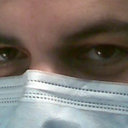Protective effect of curcumin on priapism and ischemia-reperfusion injury in rats.
Słowa kluczowe
Abstrakcyjny
OBJECTIVE
We aimed to identify the oxidative stress effects of the ischemic priapism on cavernosal tissues and to assess the biochemical and histopathological effects of curcumin in rats.
METHODS
26 adult male Sprague Dawley rats were randomly divided into three groups. Group 1 (Control, n = 8): only penectomy was performed and 3 ml blood samples were obtained from the vena cava inferior (VCI). Group 2 (ischemia-reperfusion group; n= 8): penectomy was performed after 1 hour ischemic priapism + 30 min reperfusion and 3 ml blood samples were obtained from the VCI. Group III (IR + CURC group, n = 10): 200 mg/kg/day curcumin per orally before surgery for 7 days + penectomy after 1 hour ischemic priapism + 30 min reperfusion and 3 ml blood samples from the VCI. Total oxidant status (TAS), total antioxidant status (TAS) and paraoxonase (PON1) levels were measured. Tissue samples were investigated and scored histopathologically in terms of bleeding, edema and necrosis.
RESULTS
TOS levels were higher (p = 0.002), and TAS levels were lower (p = 0.001) in the IR group compared to the control group. As a result of curcumin treatment, TAS levels were increased (p = 0.003), and TOS levels were decreased (p = 0.004) in the IR + CURC group compared to the IR group. In the treatment group (IR + CURC) TAS and TOS levels were similar to levels in the control group. PON1 levels were increased with ischemia-reperfusion (p = 0.21) and decreased with curcumin treatment (p = 0.53), however these changes were not statistically significant. There was no significant difference in the effects of curcumin on histopathological changes.
CONCLUSIONS
This study showed that curcumin has preventive effects on oxidative stress parameters against ischemia-reperfusion injury.



